Castles Of Serbia
Spitzer Castle
Beočin
Perhaps the saddest impression of all castles in Serbia is given by the legendary Spitzer Castle. Probably the impression of sadness is proportional to the size and splendour of the castle it once had, before the almost complete devastation.
The castle of the Spitzer family is located in Beočin and was built in 1898 for a family of wealthy Ashkenazi Jewish landowners who were one of the three co-owners of the Beočin cement plant. The Spitzer family is originally from Visegrád in northern Hungary, where they also owned factories. Eduard Spitzer himself was born in 1845 in a rich Jewish family as the fourth of five children and spent almost his entire life in Vienna, Budapest and Beočin. He is believed to have come from a large family of Polish Jews who migrated to Austria, Hungary and Romania on various business opportunities. The company “Redlich, Orenstein und Spitzer” bought a cement plant in 1887 from József Csik, and later Eduard Spitzer would marry Ana Orenstein, who was the daughter of Baron Heinrich Orenstein, and who taught the children of cement workers. The stage for the construction of the castle was set, since now Eduard (Hungarian Ede) had both a family and a factory, and decided to build the castle right next to a high-profit cement plant to oversee the entire work process.
The castle is located by the road to the Beočin Monastery, and the project for its construction, in the style of eclectic architecture, was done by the architect Imre Steindl, who was a famous Budapest builder at the height of his fame. Namely, Steindl did a project for the Building of the Hungarian Parliament in Budapest, and elements of both old styles (such as Romanesque, Gothic, Renaissance and Baroque), but also of the then modern style, sezession, are noticeable at the castle. In fact, Spitzer’s Castle, along with the Synagogue in Subotica, the Synagogue in Novi Sad, the City Hall in Subotica, Fischer’s Salaš in Jarak and Baba Puszta Castle (Fernbach) near Sári (Aleksa Šantić), is the clearest example of Hungarian sezession in Vojvodina.
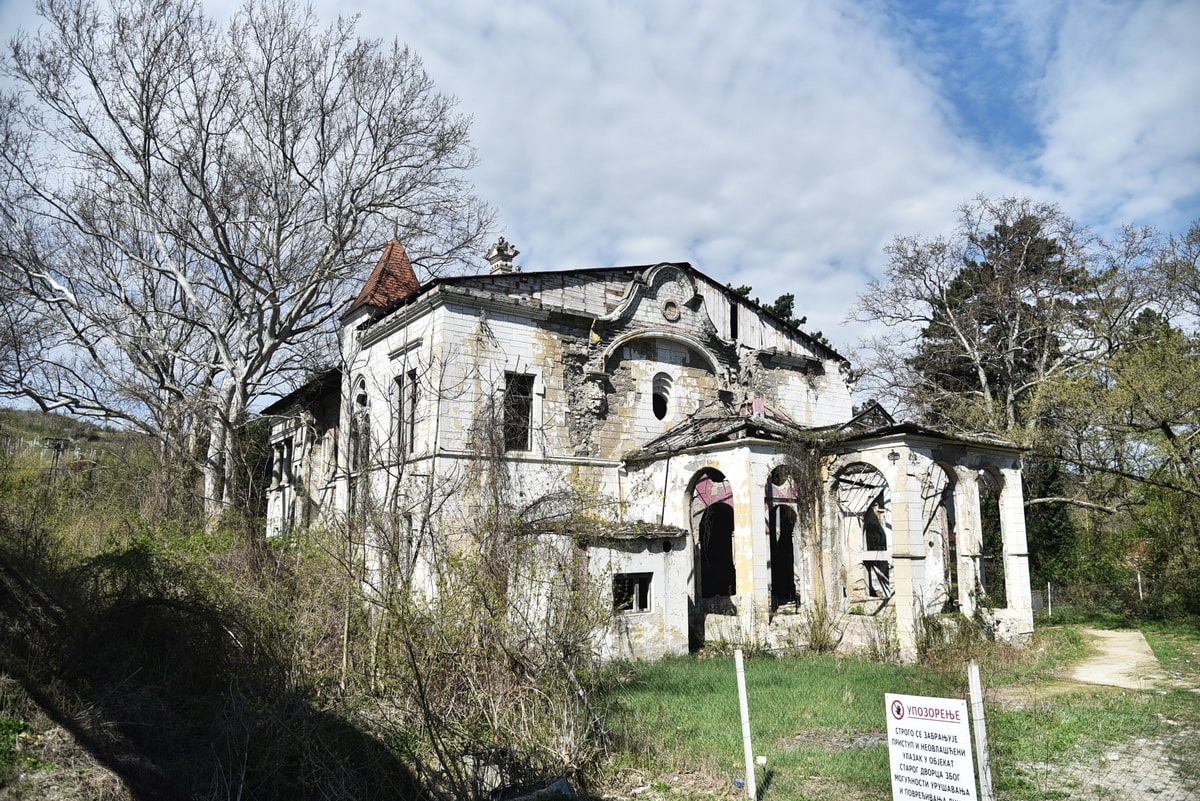
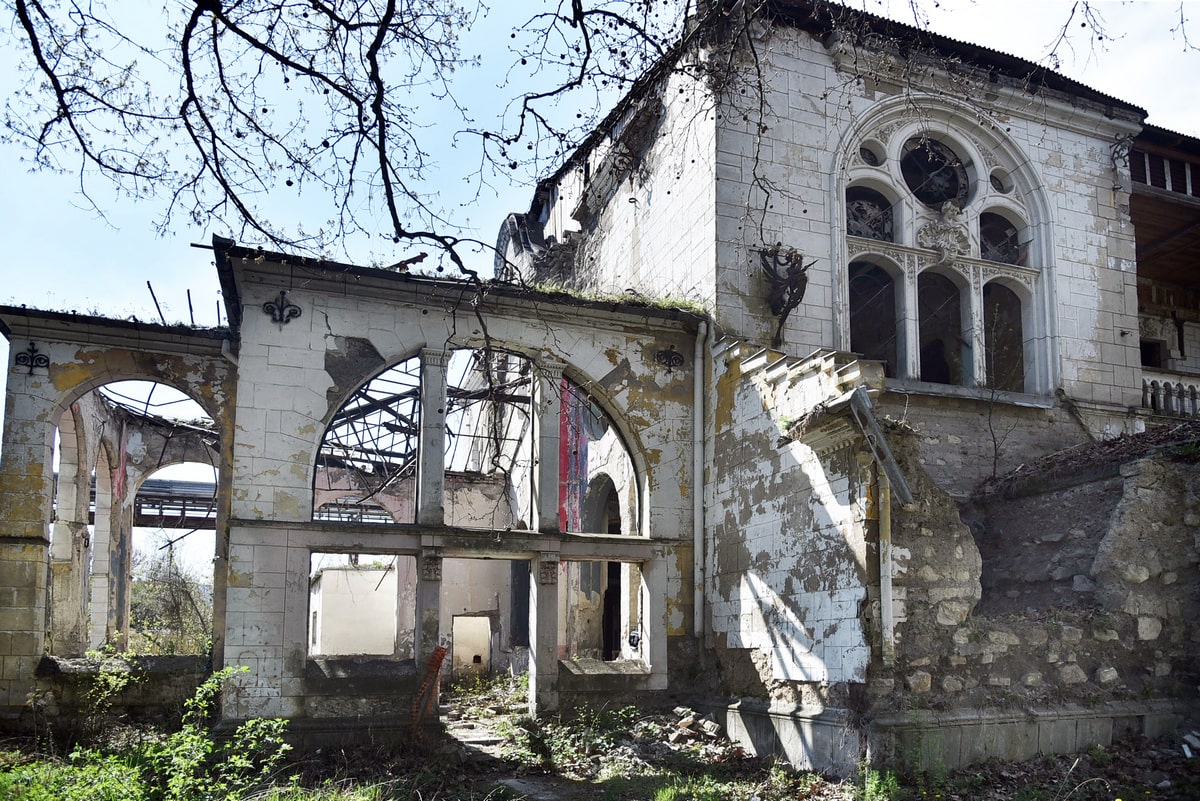
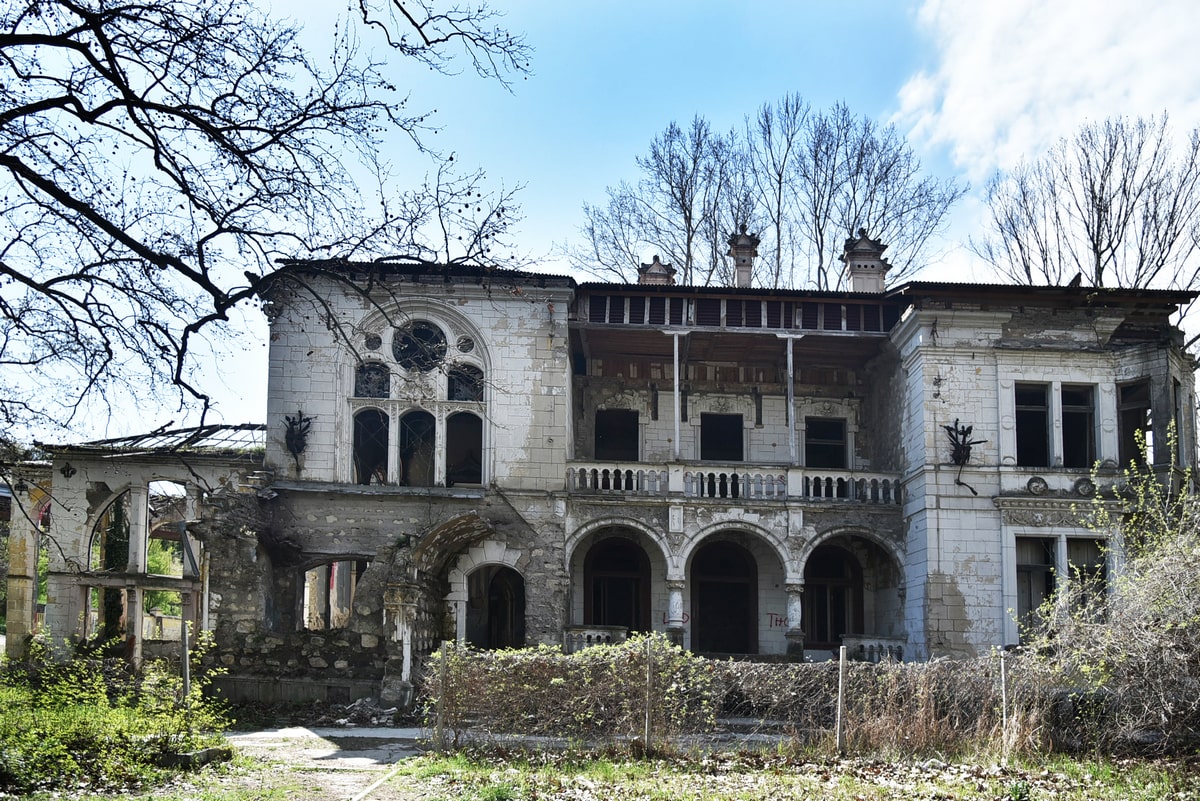
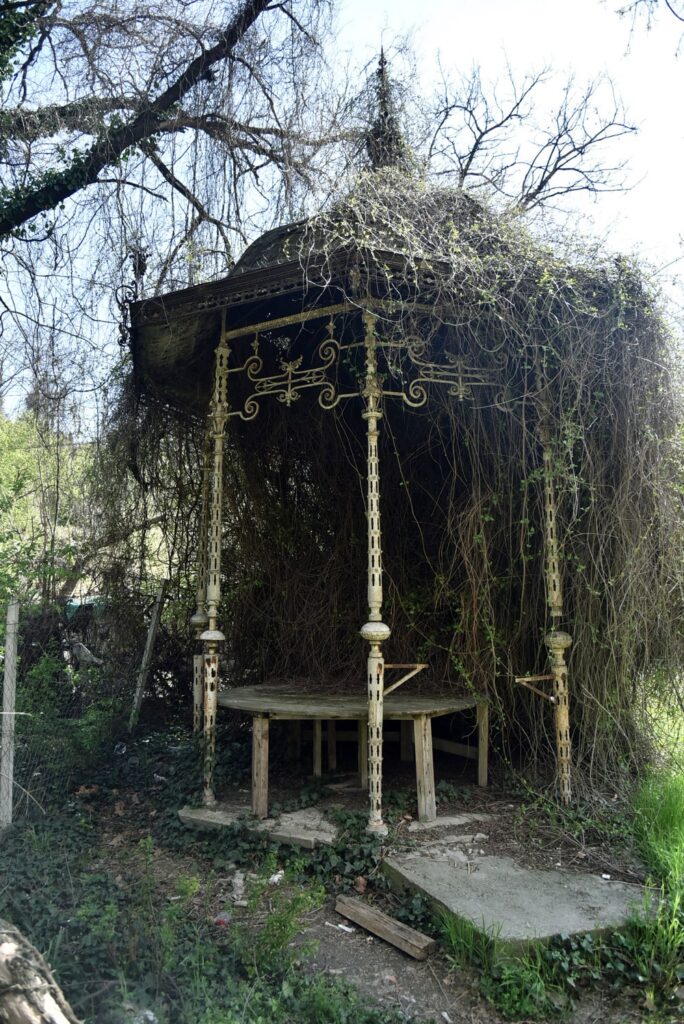
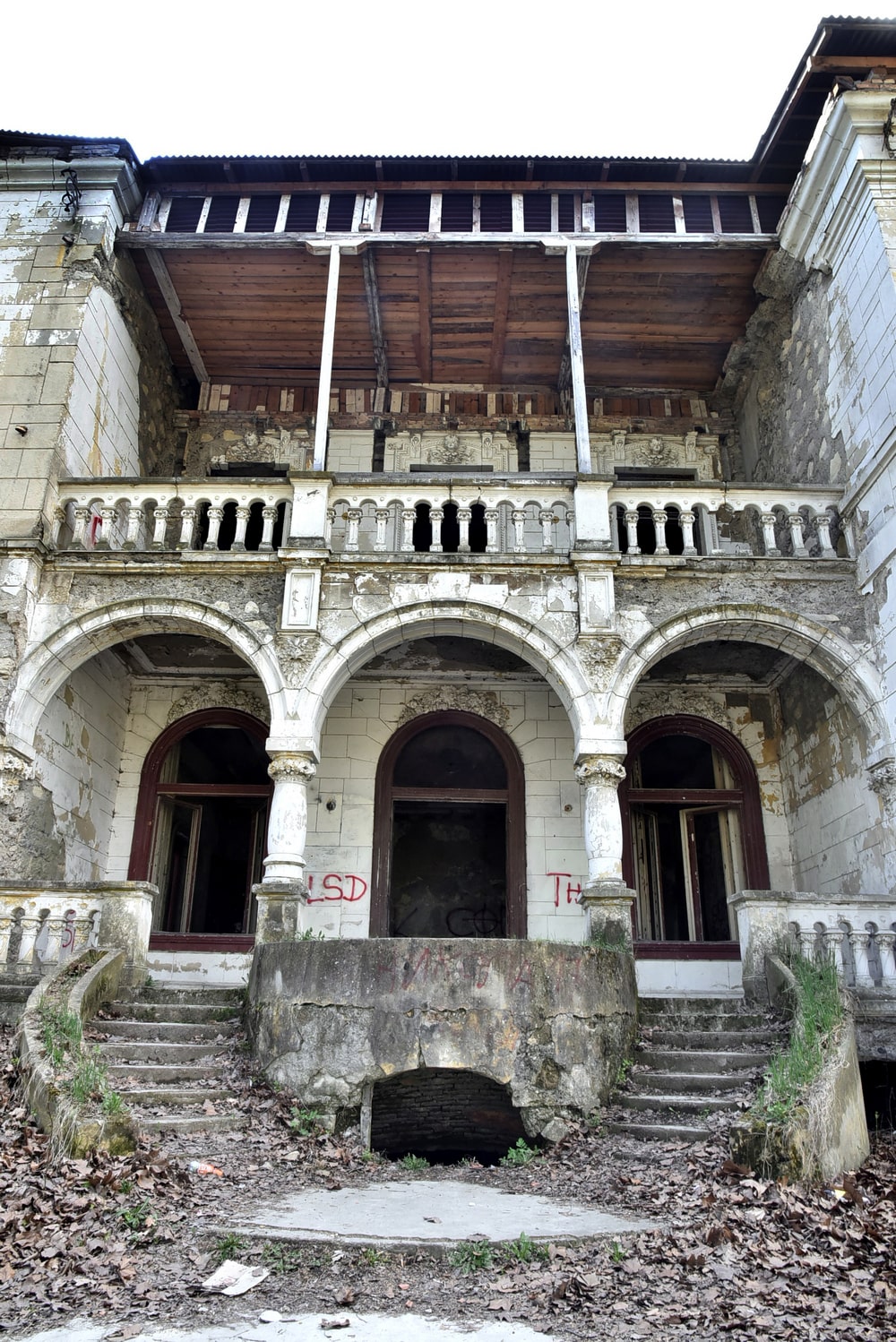
The interior of the castle was made in the spirit of the ornate variant of the Hungarian sezession and was created a little later. The most valuable part of the interior of this building is the central hall. At the same time when the castle was built, a large park was erected around it, also known as “Spitzer Garden”. Spitzer Castle is a two-storey building with an asymmetrical base. The facade is especially emphasized, and the main entrance with a portico and semi-circular steps is placed there. The special value of the building is given by the interior of the central hall. It is dominated by a fireplace made of green Zsolnay firebricks, made according to special designs. The walls of the hall are with stylized plant ornaments and painted with sezession decorative program. The walls are panelled with wood panelling as is the upstairs gallery with balusters made of solid wood. Although the building is designed in the spirit of extreme eclecticism, it features triforiums and oculuses, a terrace and windows, Renaissance arcades, a terrace fence and baroque dome lines. The interior iz dominated by bright pink and light blue colours, which make a real “fireworks” and bring the interior closer to the polychromatic of old Russian churches and Hindu temples, which gives a particularly beautiful impression and review of the architect.
The ornamental decoration of the facades is made of plaster, but the painting and bright colours make this building unique. Also noticeable are the dragon heads, birds in flight and lions, as well as elements of wrought iron and stained glasses of special beauty and fine workmanship. Stained glass with floral motifs has not been preserved in its entirety, but it can be reconstructed. In its original design, the castle also had Bavarian baroque bulbs, as well as very ornate chimneys. Of special value is that the early phase of the Hungarian sezession is present here, which will later develop its full splendour and become recognizable and luxurious, but this example shows how Steindl developed the expression of the Hungarian sezession from eclecticism. In the yard, towards the road (street), overgrown with bushes, there is a gazebo.
The Spitzer family left Beočin before the beginning of the Second World War, and during it the castle was used as a building of the German military command, and after itsending, the building was nationalized. After that, it housed the city library, the House of Culture, the headquarters of the handball club, the radio station, the home for the disabled in war and finally an exclusive restaurant with accommodation. After the privatization of the company Podunavlje, within which it functioned, the building was abandoned and since then its sudden deterioration has begun. Our famous poet Miroslav Mika Antić used part of the castle as his painting studio. His frequent guest was Pero Zubac. The walkway for the transfer of stone in the cement factory, which is located in the immediate vicinity of the castle, contributed to the decline.
Numerous movies and music videos have been shot here. Among the films, the following films should be singled out: “Scorching City” by Veljko Bulajić (1961), “Holy Sand” by Miroslav Antić (1968), “Early Works” by Želimir Žilnik (1969), “Kelly’s Heroes” by Brian Hutton with Clint Eastwood in the main role from 1970, and “Breakfast with the Devil” by Miroslav Antić from 1971, “Boy and Violin” by Jovan Rančić from 1975, “Black Cat, White Cat” by Emir Kusturica from 1995, as well as the Hollywood production “Brothers Bloom” from 2008 by Ryan Johnson starring Rachel Weisz, Adrien Brody and Mark Rufallo.
Today, almost all the windows on it are broken, and due to heavy rainfall during the winter of 2011, part of the entrance porch collapsed. On June 18, 1997, the building was declared a cultural monument. The castle is in a catastrophic condition, and has no windows or doors. The roof was recently repaired so that it would not collapse and lead to the demolition of the entire castle. The environment is full of garbage.
It is also often called the “House of Ghosts”. At one time, Emir Kusturica, amazed by his beauty, offered to buy the castle and renovate it at his own expense and put it into operation, but that request was not approved. Nevertheless, reconstruction is possible and the preferred purpose of the castle could be an exclusive restaurant with accommodation. The castle is a registered cultural asset.
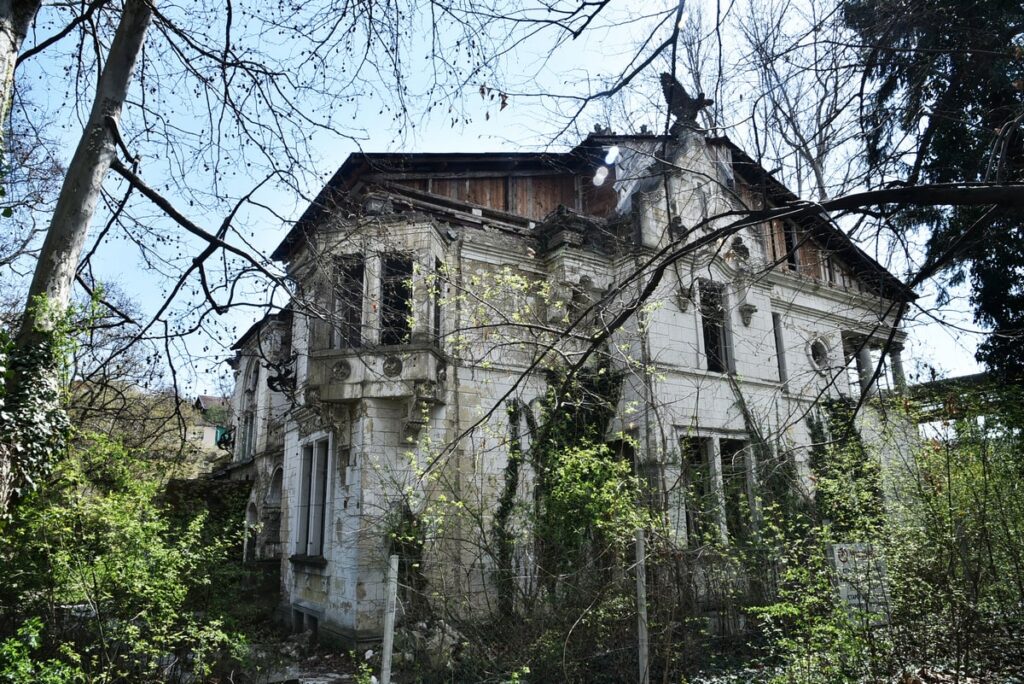
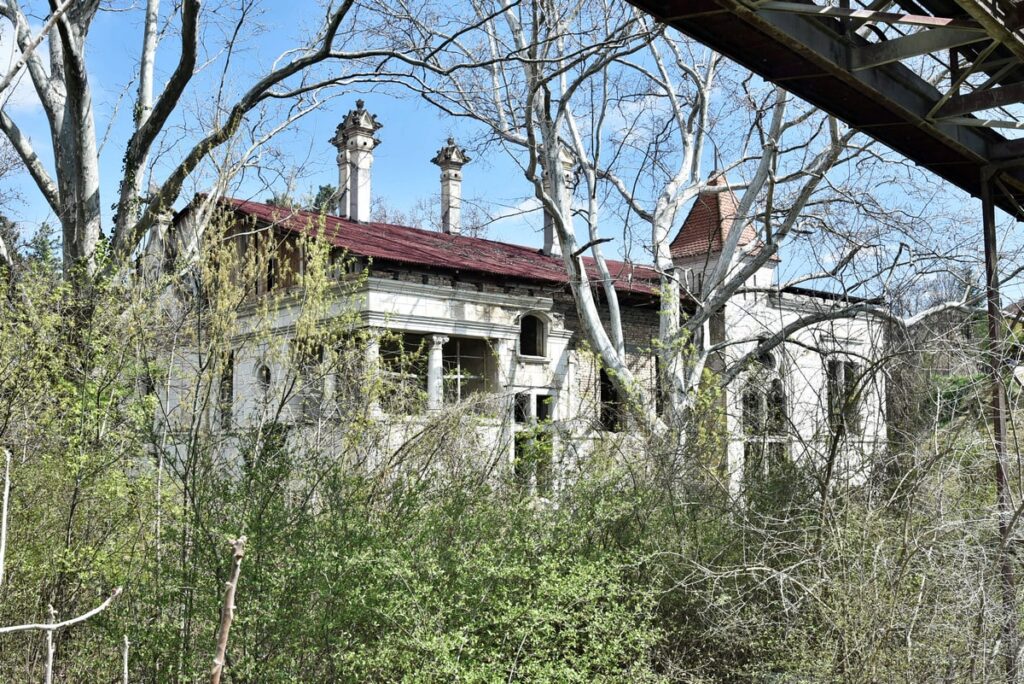
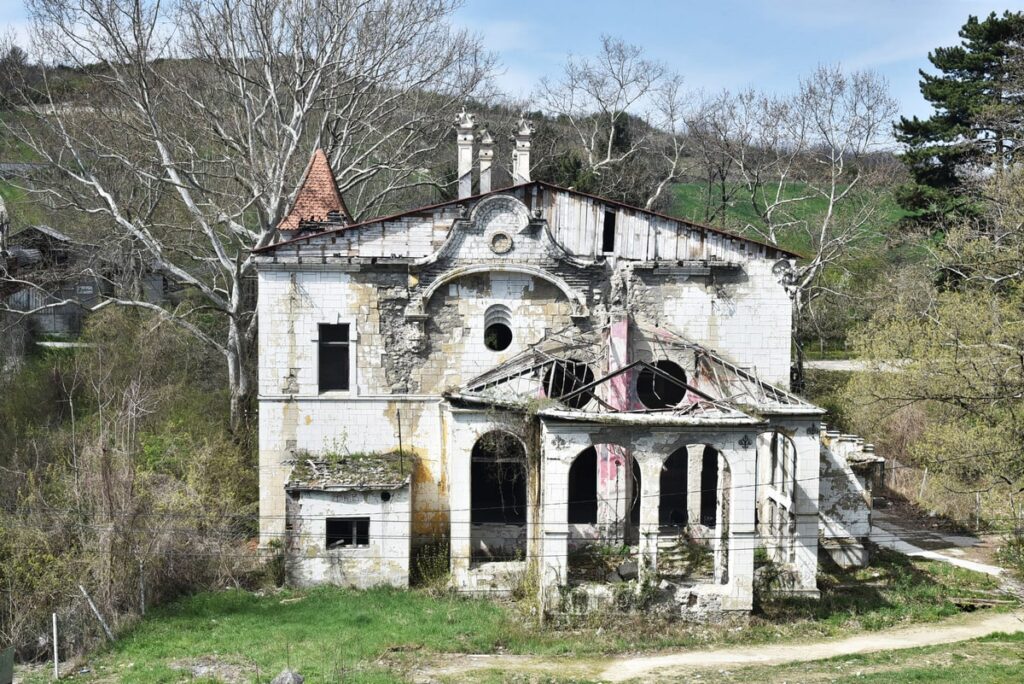
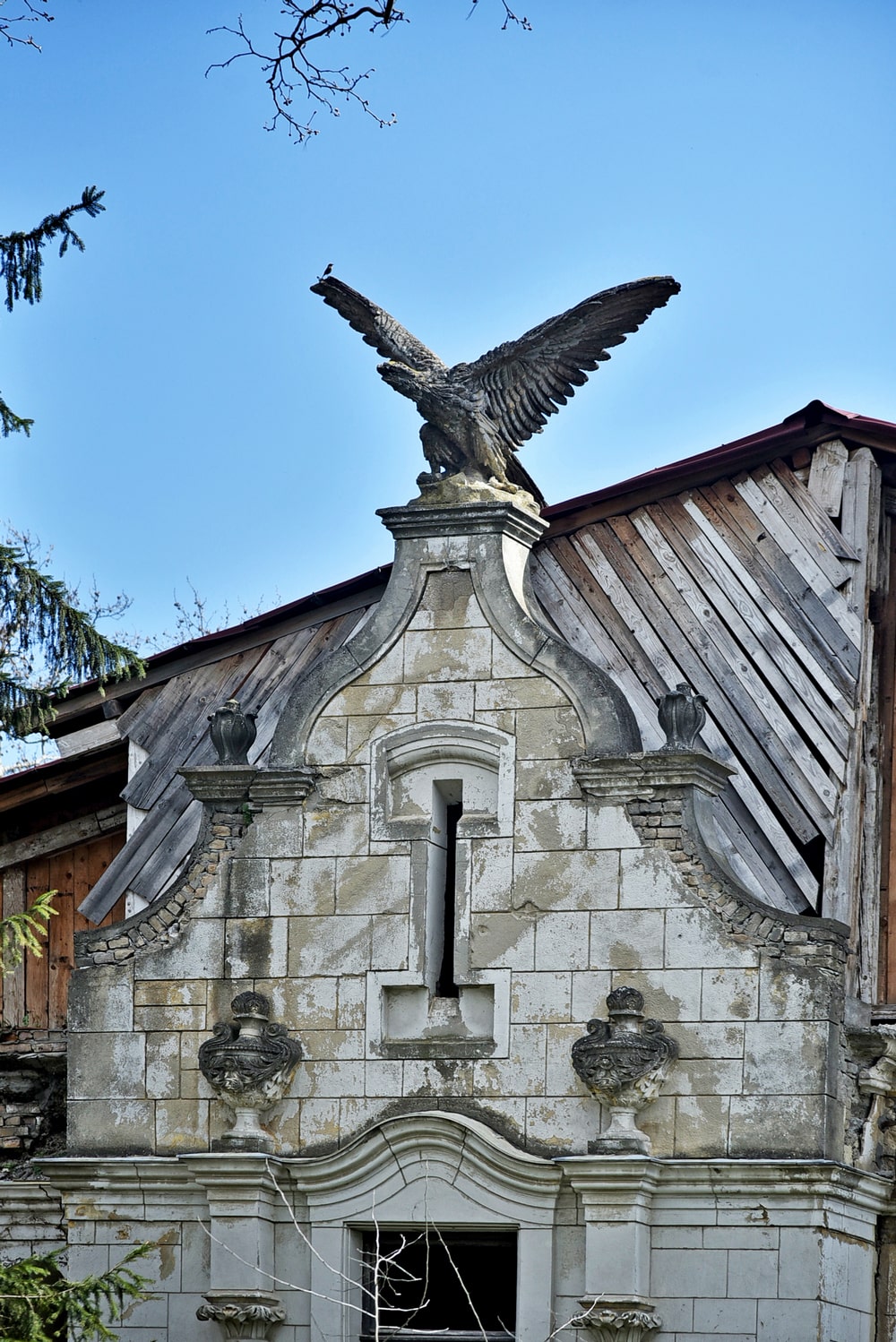
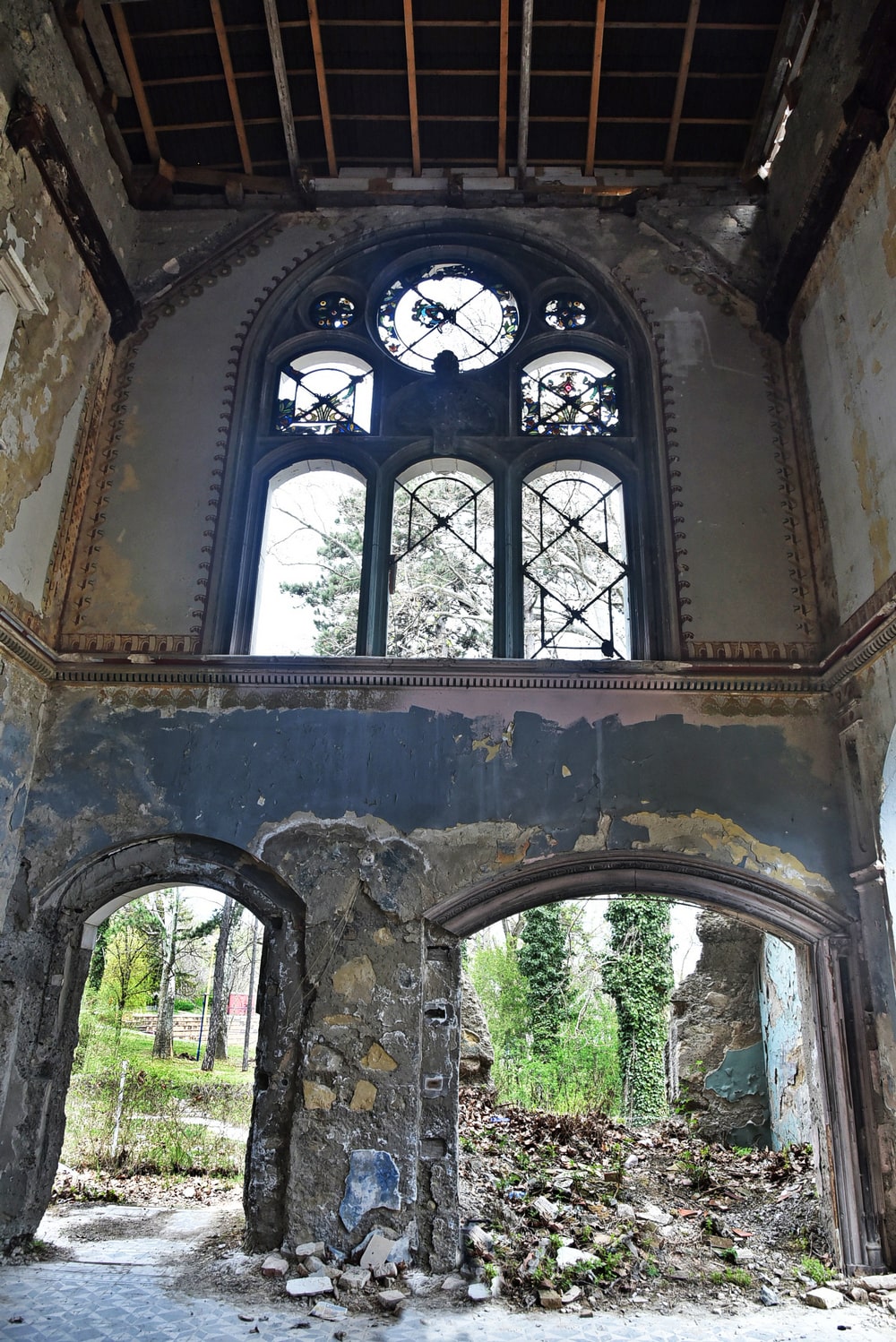
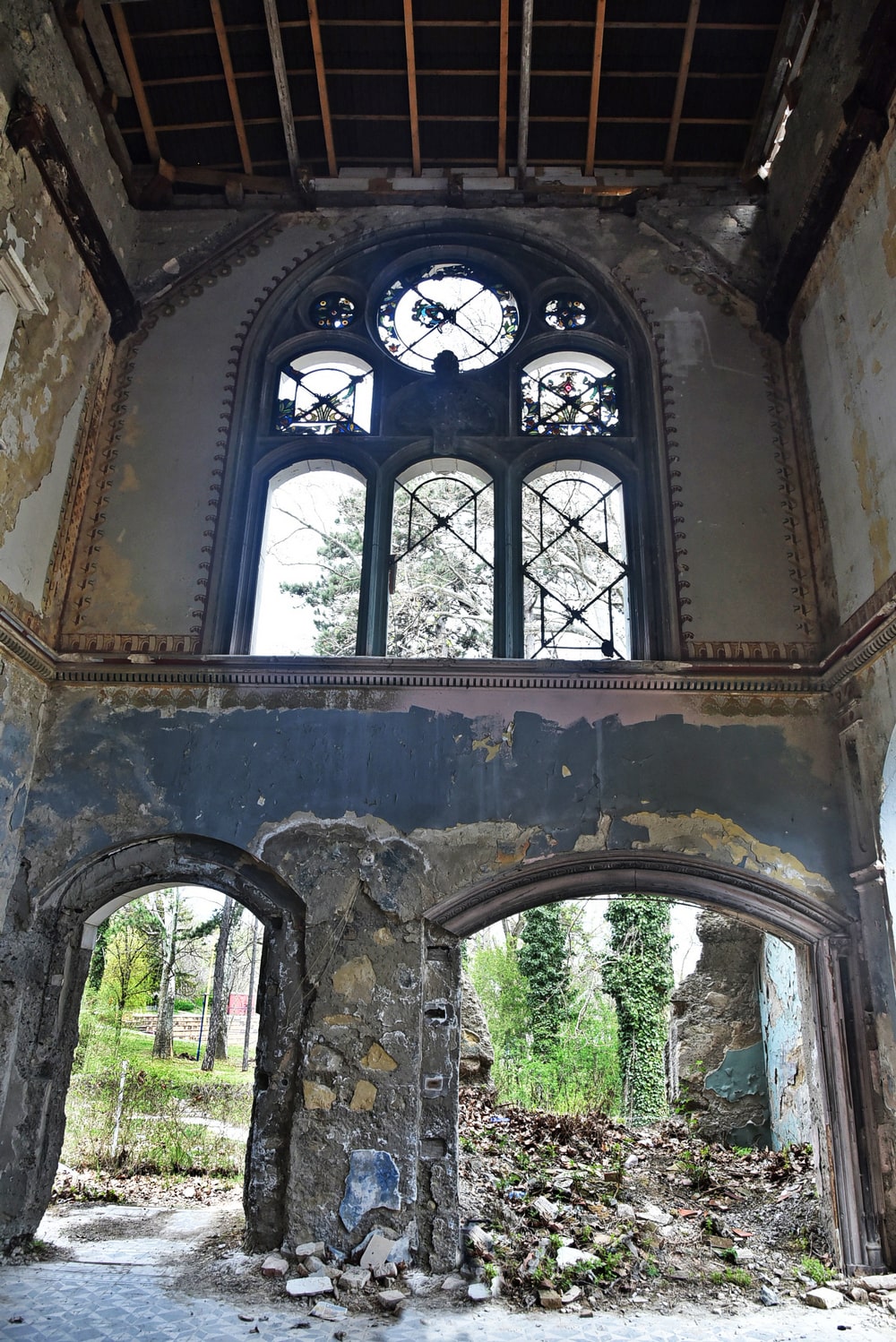
Of course, there is legends & lore about this castle, which are again described by Milan Belegišanin in “Dreams of Grassy Towers”.
“The castle in Beočin is one of the most beautiful sezessional castles in this part of Europe. However, the decorations on the castle differ from the beautiful facade and interior with numerous stained glass windows. Dragon-like, frog-like and snake-like heads seem to have been taken out of some midnight ghost fair, which takes place around the castle from time to time. The name of the builder could not be found out for a long time. Only thirty years ago, when the restoration of the castle began, in the cooled down ashes of the gypsum furnace, a parchment was found, on which the following was written: “By the glow of his eyes, I would say that he comes from the Far East.” His name is Nador. Since he arrived, he hasn’t said a single word – just keep quiet and knead the render for the facade and the decorations on the castle. What astonished me was that he has seven fingers on each hand. His hands are so big that they cover the entire fountain with shade, when he raises them in the morning to pray to the rising sun. Only birds seem to be happy with his arrival. They probably think there will be a lot more crumbs in those big hands when he feeds them. “(One part on the parchment that is illegible follows) Continuation: “Nador has never fed the birds. He is still just kneading plaster, making decorations on the castle and silent. Those ornaments of his are strange. “… It seems to me that the plaster heads of these animals came out of the mind of some evil man who had never loved anyone in his life.
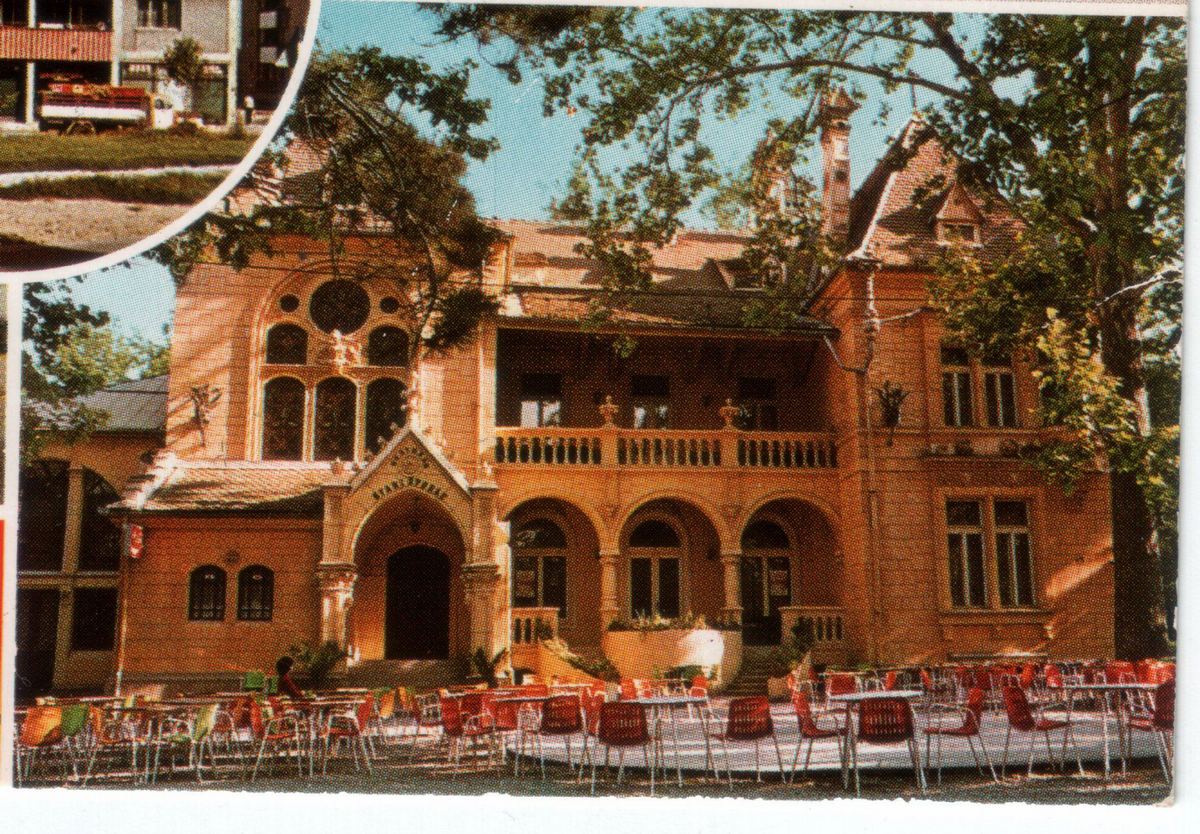
Фотографија: Петар Комљеновић
Plaster messages of hatred and blackness emerge from Nador’s distorted imagination. I secretly watch his huge hands kneading the plaster in silence, and I must admit that I admire a little that seven-fingered darkling who interrupts his work only when he prays. “(Again, one illegible part on the parchment follows) (And the sequel that follows is barely identifiable, as if the author ended his record in mortal intimidation)”Yesterday something terrible happened. It was the last day of Nador’s work. Sometime around noon, he finished the figure of the oriental dragon on the plaster furnace. Before he started packing, he stood in front of the facade. to see his work and contentedly opened his right fist.It was full of crumbs of bread.That moment I thought I might have sinned against a strange builder.
At first, a gentle white dove landed in his fist, but Nador did not feed it, but he clenched his fist and hurled a lump of bloody feathers towards the highest chimney. Tired of deception and evil, he sat down on his sofa in the upper room to before the trip. Revenge came to him at dusk. While he was sleeping, the pigeons covered him with their feces, so that they completely glued him to the sofa. The night before, he turned into pigeon droppings himself … I’m not only scared, but I’m also sad. No one will pray to the rising sun anymore, but there will be no white dove flying towards the light. “
Andrija
P.S. “I’m leaving tomorrow. Landowner can’t understand that I can leave a warm bed and a good salary just because I don’t feel good when I look at the decorations on the castle facade. I leave this record in the mouth of the dragon on the plaster furnace. If what I say is true, the parchment will not burn. “
Danka Vučković mentions another sad legend. “Ede Spitzer lived in this castle with his wife Clara, son Jonas and daughter Johanna. Those who served the family left a story or legend through which evil fate passes… The story says that Spitzer’s daughter often stayed there when she spent her days outside Vienna and Pest. They say that walking in the garth and the garden with a book in her hand used to stay behind, where there used to be a small summer house and where the love between her and the groom broke out. That love did not come true because her parents prevented it. According to some legends, she killed herself because of this unhappy love. Even today, more than 100 years later, some locals still have fear. Locals say that pigeons nested in its attic at the time when the school was located in the castle. Many were not even allowed to step into that dovecote, convinced that the old attics were a labyrinth of mysteries. “. ” (www.razdanjivanje.com/spicerov-dvorac-ko-su-fruskogorski-duhovi).
Access to the castle is forbidden.
A metal fence has recently been erected around the castle, as there have been recent accidents with falls and fatal endings, due to the instability of the castle.
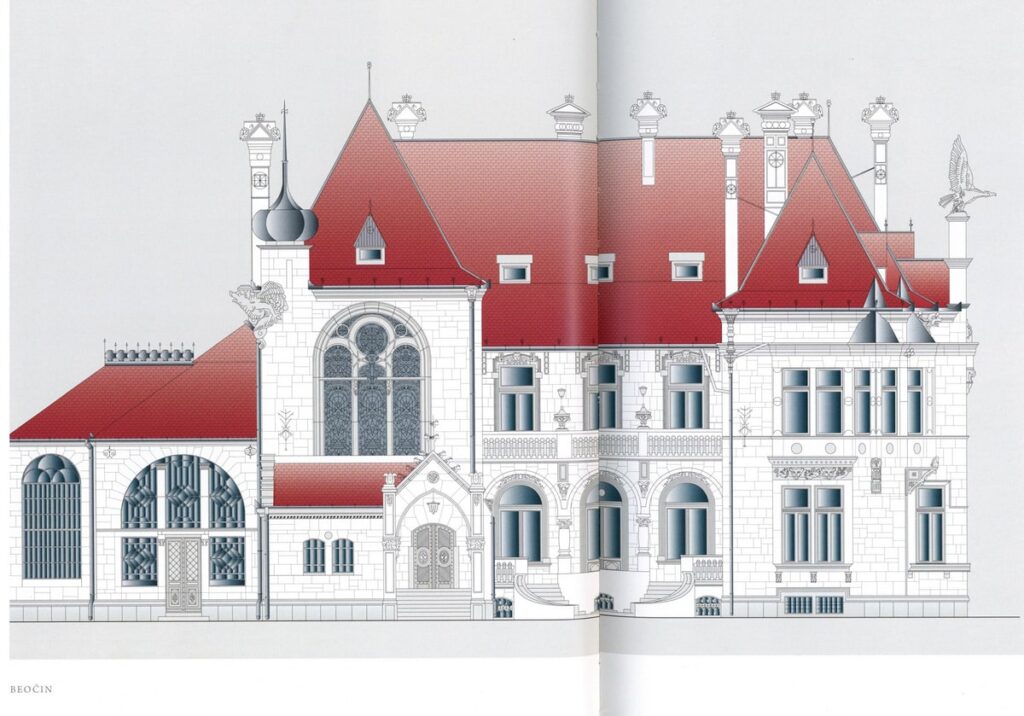
This project was supported by the Ministry of Culture and Information of the Republic of Serbia.





